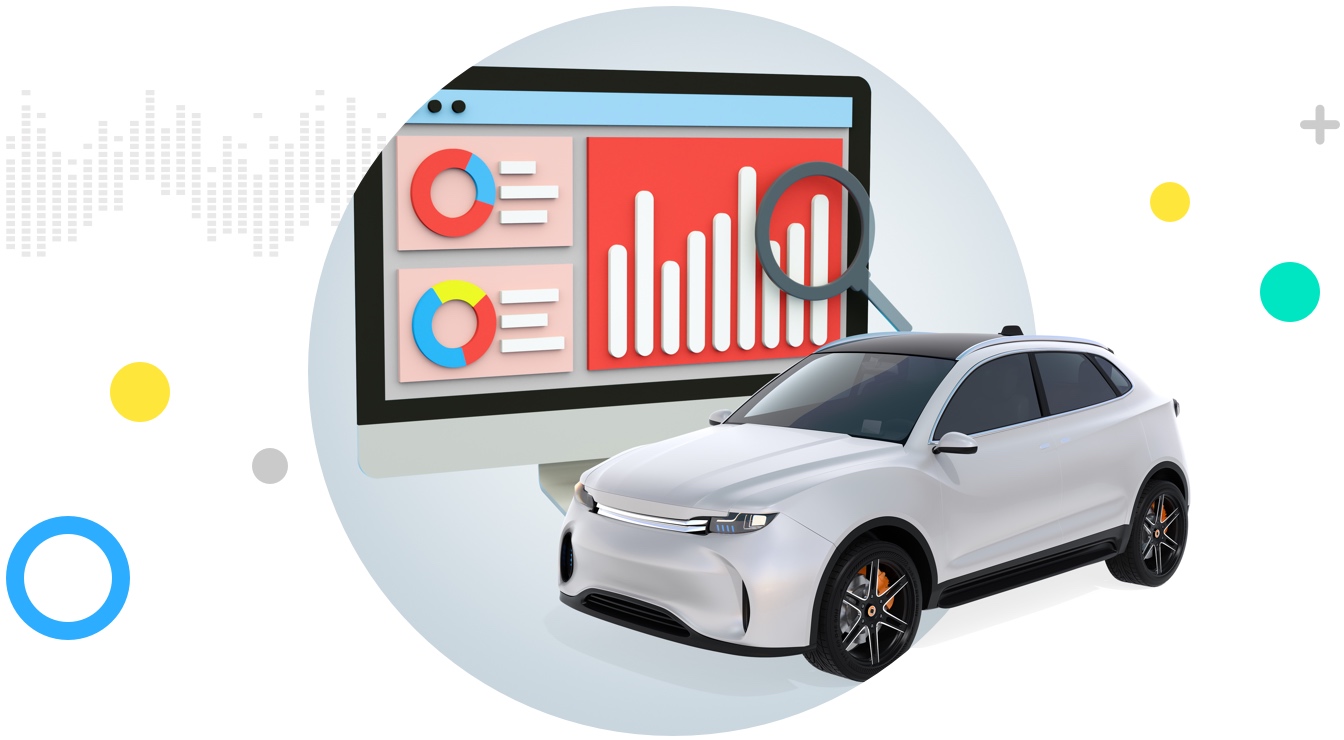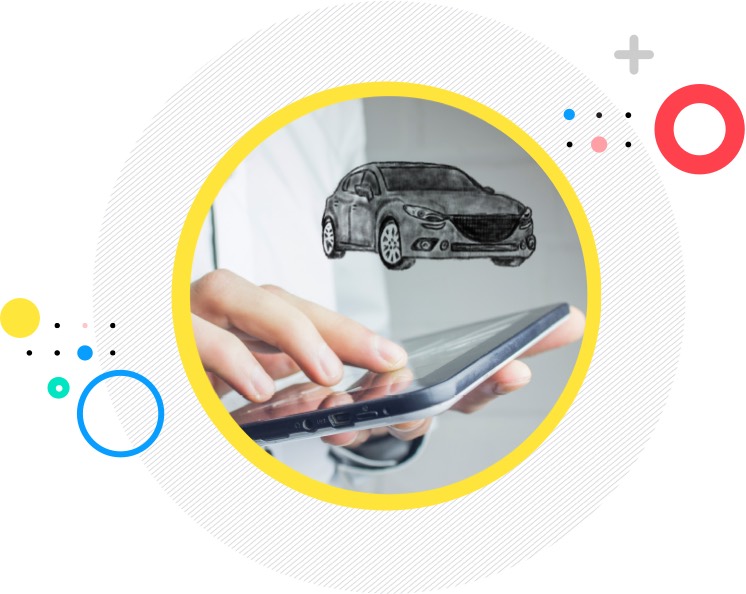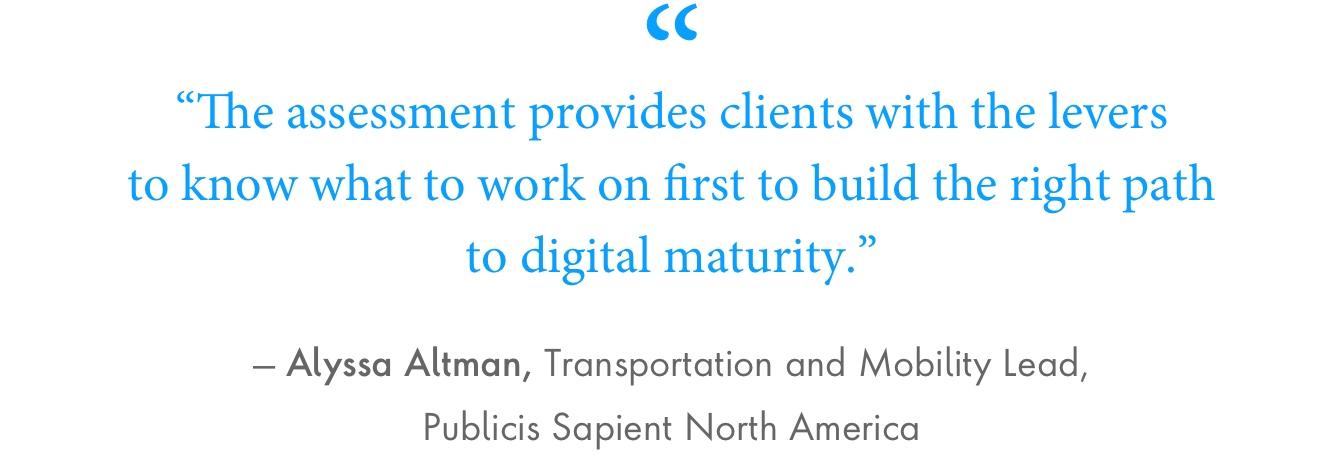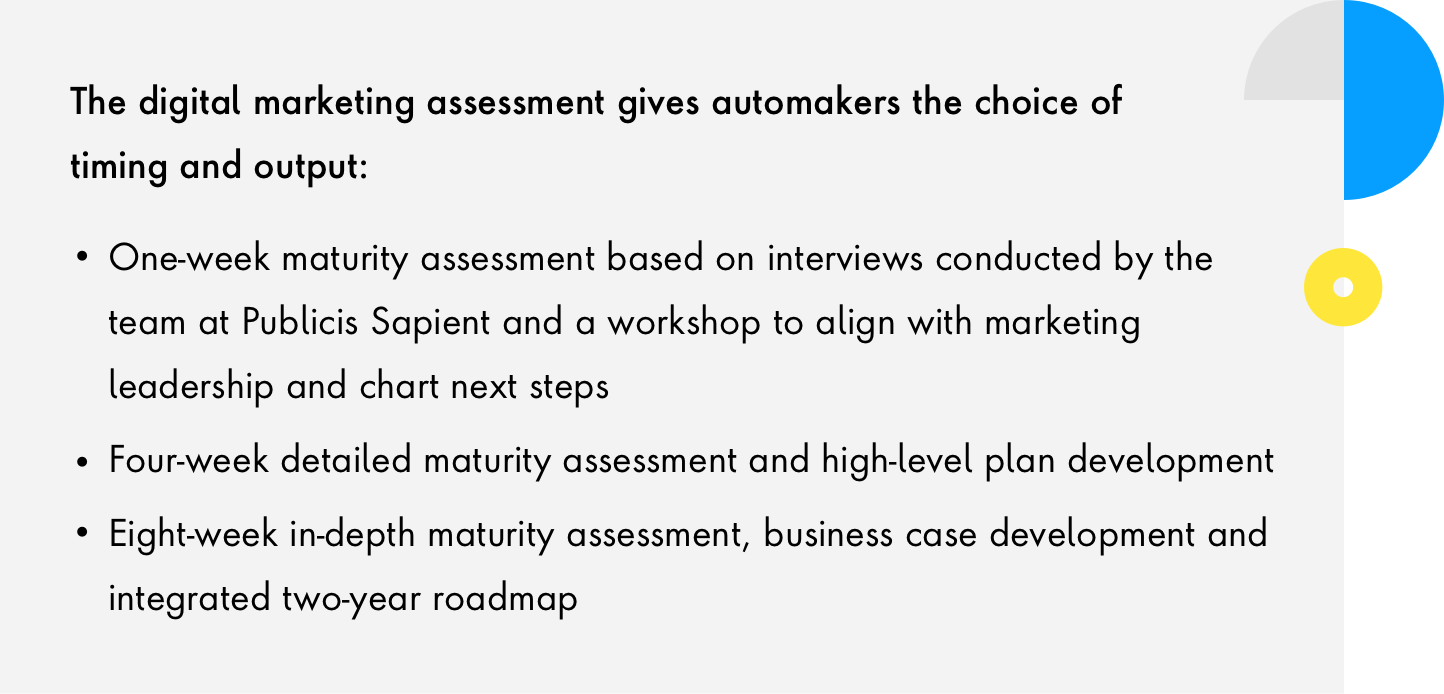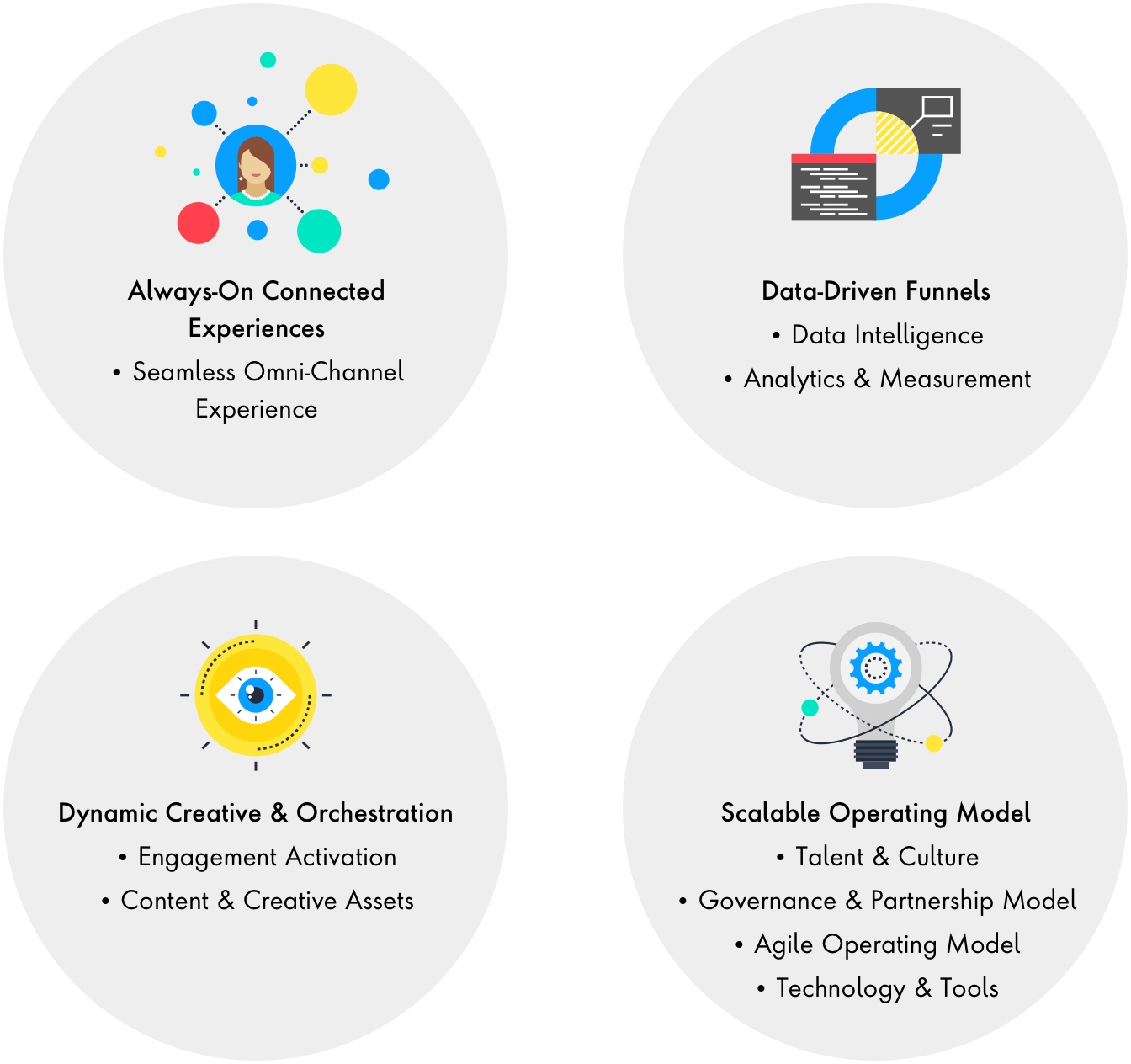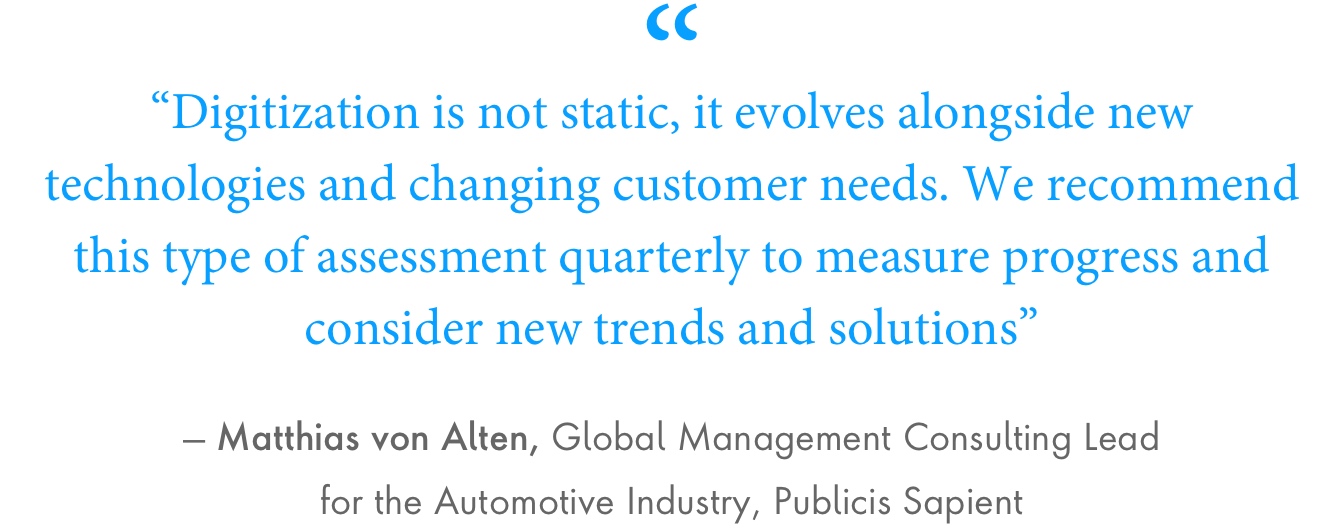The right talent and culture will help OEMs realize digital marketing transformation and outcomes.
- Lowest maturity (1, 2): Lack of modern marketing talent, minimal career development opportunities and performance measurement is not aligned to marketing goals.
- Highest maturity (3, 4): Best performers are hired, trained and optimally integrated. Talent and skills are positioned ahead of market demands.
A robust governance and partnership model allows OEMs to establish integrated and value-oriented program governance and flexible funding for priority and scope adjustments.
- Lowest maturity (1, 2): Siloed marketing operations, traditional annual budgeting and missed opportunities with partnerships.
- Highest maturity (3, 4): Real-time, global communication and collaboration, flexible funding and meaningful strategic partnerships.
An agile operating model consists of self-directed, empowered teams with a test-and-learn mentality and iterative delivery.
- Lowest maturity (1, 2): Waterfall ways of working, reactive marketing tactics, little testing and marketing goals are not aligned with business objectives.
- Highest maturity (3, 4): Iterative delivery, rapid decision-making sits within teams, testing is central for all campaigns and global marketing strategy and goals are tied to business objectives.
Technology and tools enable efficient collaboration, access to data and insights, time to market, automation and employee culture and experience.
- Lowest maturity (1, 2): Legacy system landscape, fragmented data sources and siloes between HQ, regions, markets, dealers and consumers.
- Highest maturity (3, 4): Central data lake, connected marketing and sales systems, advanced dashboard solutions that drive decisions and are sales funnel-oriented.
For example, GM’s overarching goal is to “optimize everything”. The company uses data and insights to fuel cultural transformation, generate new revenue streams and improve customer experience. Data is democratized so that all employees have access to data and are encouraged to use it to answer questions and make decisions. Customer, corporate and business data are managed as a single strategic asset to increase transparency, break down siloes and help GM successfully digitally transform.







